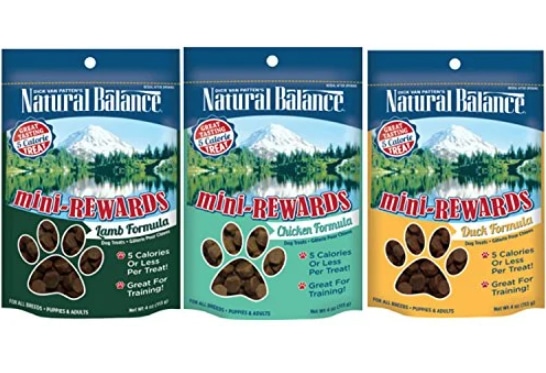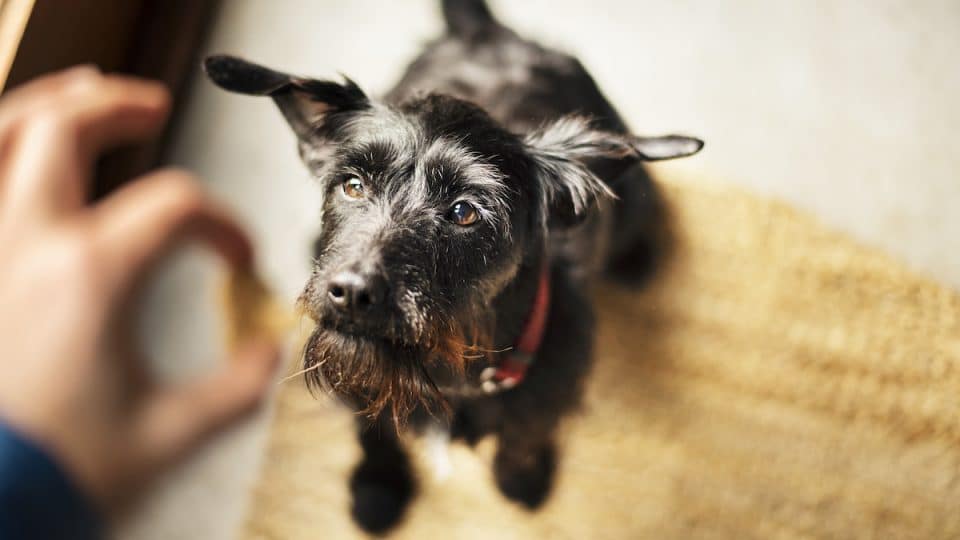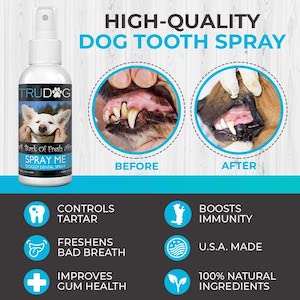- This review contains affiliate links. Read more here.
The most effective dog training works on the principle that, when a dog acts in a way we like, the dog is rewarded for their efforts. Rewards can be anything that motivates a dog, such as playing with a toy or getting a deep scratch behind the ears. But for many types of training, the best reward is an edible one. That’s why choosing a healthy dog training treat is important.

Redbarn Naturals Premium Dog Food Roll
These soft rolls are easy to cut into bite-sized pieces for training and come in beef, lamb, or chicken flavors.
As a professional dog trainer, my job is to train dogs with a variety of presenting behaviors from fear to aggression, and picking the right treat to motivate and encourage my dogs is key. High-quality ingredients are important, because I don’t want a treat that is more grain-filler than wholesome meat, vegetable, or fruit. And as I’m treating the same dogs frequently every day, I also take calorie count into consideration (in some cases, I recommend reducing a dog’s regular meal portions to balance out the extra calories they’re consuming when being rewarded with treats).
Enticing dog training treats come in lots of shapes and sizes. Packaged, store- or online- bought dog treats can be great for training, but some situations call for “high value” or stinkier treats such as meat and cheese better found in the aisles of a grocery store. If you’re handy in the kitchen, you can make your own healthy training treats with Rover’s beef jerky or salmon swirl treat recipes, and you can even use your dog’s own kibble as treats in low-pressure environments.
My Favorite Healthy Dog Training Treats
Taking all of the above options into consideration, these are my eight favorite healthy dog training treats for daily use.
Pro tip: A dog training treat bag or pouch can be very helpful for easy access to your treat of choice (for more about treat bags, see our article, “14 Dog Treat Pouches to One-up Your Walks and Training Sessions”).
Technically sold as a dog food, these soft rolls are easy to cut into bite-sized pieces for training. At the dog shelter where I cut my teeth in dog behavior, these dense rolls were a favorite among dog trainers and staff members for their near-universal appeal to dogs of all types. The rolls come in beef, lamb, or chicken flavors and 50% of each roll is made with fresh meat. Redbarn Naturals contain no soy, corn, or carrageenan.

Redbarn Naturals Premium Dog Food Roll
These soft rolls are easy to cut into bite-sized pieces for training and come in beef, lamb, or chicken flavors.
Zuke’s Mini Naturals are great treats that are sized just right for training, whether you have a 10-pound terrier or a 90-pound retriever. Zuke’s are soft and chewy but sturdy, and they won’t fall apart in your pocket or treat bag. Each treat has less than three calories and is sold in six (often stinky) flavors. Best of all, Zuke’s treats contain no soy, corn, wheat, or artificial colors, or flavors.

Zuke’s Mini Naturals
These soft mini training treats are free of fillers like soy, corn, and wheat, as well as artificial colors and flavors.
Soft Puppy Bites by Wellness are an excellent dog training treat choice. Soft and chewy, they contain high-quality lamb and salmon along with DHA for cognitive development. Many of my clients particularly like the grain-free lamb and salmon recipe.

Wellness Soft Puppy Bites
These soft and chewy treats, shown here in the lamb and salmon flavor, contain high-quality ingredients.
Fruitables “skinny” treats are low in calories, making them an excellent choice for training. Just about every dog absolutely loves bacon, so this flavor is a good bet for appealing to the senses. The first ingredient is always a wholesome fruit or veggie. Fruitables come in different varieties including crunchy, chewy, and jerky to suit your dog’s preferences. Although these treats are low in calories, they can help reduce hunger between meals.

Fruitables Skinny Minis
Available in a variety of textures, these low-calorie treats are an excellent option for training.
Natural Balance Mini Rewards contain less than five calories per treat. The main ingredient is high-quality duck, chicken, or lamb, and they’re an excellent choice for all ages, whether puppy, adolescent, or senior. This is one of my favorite training treats for adult dogs, and especially for dogs who tend to overeat. You can give plenty of these Mini Rewards without worrying about calorie intake.

Natural Balance Mini Rewards
With less than five calories per treat, you can your dog plenty of these mini-sized training treats.
I’ve never seen a dog not go crazy for baby food. Pop that top and they come running: it’s just one reason I love to use this as a treat for recall training or when working in highly distracting environments. What’s not to love? These purees, which contain no salt, sweeteners, or artificial colors or flavors have been trusted by parents for their human babies for decades. The stinky smell and novel texture make them a favorite for fur babies, too. I prefer to use the meat flavors when possible but vegetable purees made from sweet potato or squash also work well.

Gerber’s Baby Food
Since this chicken and gravy-flavored puree is free of salt, sweeteners, and artificial colors or flavors, it makes for a healthy training treat.
7. Fresh Meat or Cheese
Fresh meat or cheese is always my go-to when working with new dogs or when training in class or outdoor environments. Cut up into tiny, pinky-nail-sized pieces, fresh meats and cheeses are easy to swallow and easy to digest. While I typically purchase organic chicken breast or natural hot dogs that don’t contain onion or garlic, you can use any kind of food from your grocery store’s meat aisle. It’s worth noting, though, that some dogs, often those on the smaller side, may have tummy trouble with lots of cheese or rich meats like beef.
In some situations—typically those in quiet environments where your dog won’t be highly distracted—kibble can work perfectly well as a dog training treat, particularly if the dog is overweight, and already food-motivated. Consider training to be part of your dog’s mealtimes. For example, if you’re working with your dog near breakfast, take a handful out of their portion for breakfast to be used during any morning training exercises.
If play or puzzles are a part of your training routine, you could also consider a dog food dispenser or toy to up the fun factor.
The Bottom Line
Training treats should be of high-quality without adding too many calories to your dog’s daily diet. When choosing a treat, be certain to review the ingredient label. The first ingredient should be meat or fish, rather than a byproduct or “filler” such as grain, corn, or rice.
Happy training!






